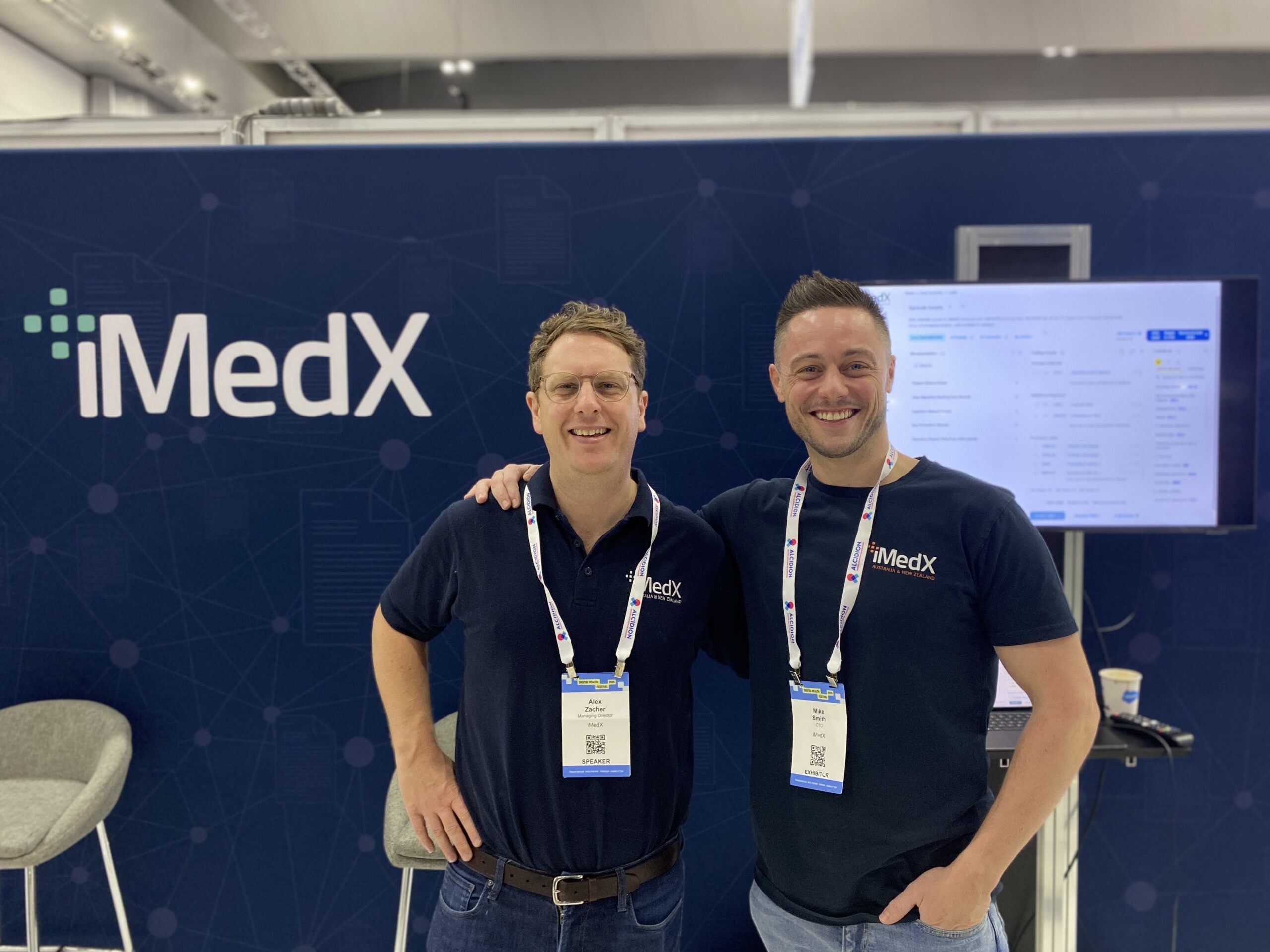Health information management provider iMedX has launched its new HIM Companion Suite at this year’s Digital Health Festival in Melbourne, with the aim of consolidating coding processes into a single platform and removing the need for multiple coding solution providers.
iMedX managing director Australia & New Zealand Alexander Zacher told Pulse+IT the suite was designed to streamline coding workflows and improve financial outcomes for healthcare providers.
“We’re really trying to give time and money back to care. The problem to solve, though, is that there are so many point solutions along each step, and what we’ve created is an all-in-one, one-stop shop solution,” Mr Zacher said.
This suite consolidates coding workflow management, coding grouping, education, live coding advice, and auditing, and aims to ensure that every record is audited efficiently.
A key new addition is an AI-powered chatbot that can provide coder support and improve accuracy, while also reducing administrative burdens.
Mr Zacher said iMedX’s acquisition of Pallas AI last year had brought onboard Mike Smith, founder and CEO of Pallas AI and now chief technology officer at iMedX Australia & New Zealand, who Mr Zacher called a “visionary CTO that had a goal of transforming the healthcare landscape through revolutionising end-to-end of health information management.”
Mr Smith said iMedX’s HIM Companion Suite used multi-agent AI technology and was designed to replicate human expertise in coding and auditing.
“One of the key pieces of feedback that we’ve got from years of experience as a health information management company is that not everyone’s on the same maturity path,” Mr Smith said.
“People have got different systems, and they’re at a different part of their journey of documentation.”
He said that to cater to varying maturity levels, iMedX’s document-driven solution could manage scanned paper records, digitised medical records and electronic medical records (EMRs).
The suite redacts protected health information (PHI) and personal identifiable information (PII) before transmitting data to multi-agent AI models that analyse the records, mimic the coding thought process, and pre-populate diagnosis and procedure codes.
Mr Smith said the goal was to keep healthcare professionals engaged with the solution – including coders, auditors, and educators.
“We really want to keep the humans in the loop. That’s our main philosophy as a health information management company.”
Mr Smith said one of the biggest hurdles in the healthcare industry was a shortage of qualified coders and the pressure faced by existing coders.
“They’re doing a superhuman job. They’ve got to hit 95 per cent plus levels of accuracy. The whole revenue of activity-based funding depends on them getting it right, and then more and more pressure is put on them,” Mr Smith said.
The iMedX HIM module was designed to ease that pressure by automating simpler cases – such as day infusions, renal treatments, chemotherapy, and scopes – in order to allow coders to process high-volume episodes in minutes instead of hours.
“If we can help them get through that volume in the first half-hour, we’re giving them time back, so they can focus on education and spend deeper time analysing the complexity of episodes.”
Mr Smith said traditional AI faced tokenisation limits that restricted the scale of document processing, but multi-agent AI avoided these limits by distributing tasks among specialised agents, each responsible for different aspects of coding, validation and auditing.
“Where AI was even six months ago, you ran into tokenisation limits. When you have agents, you no longer run into limits because you pass it down the chain. Together, you can solve the problem better when you’ve got multiple agents,” Mr Smith said.
He said this would allow healthcare providers to move beyond “monopolistic constraints” and reduce overall costs.
Mr Smith said feedback from clients was that “Finally, it’s all in one place – I don’t have to have this product, this product, this product.”
He said iMedX also aimed to lower the cost of coding solutions in the healthcare sector.
“It’s hard enough being a private or public hospital at the moment – why don’t we change the industry and contribute back by doing lower-cost things?”
Data privacy was also a key focus, especially with “AI playing an increasingly important role in coding and auditing,’ Mr Smith said.
“I personally take patient data privacy very, very seriously. One of the first concepts in our architecture and design work was building a PHI and PII software package, which sits on the customer side and removes personal data before transmitting anything to our AI models.”
Interoperability was another priority for iMedX, with the HIM Companion Suite able to integrate with major EMR providers including Cerner and Epic, as well as Sydney Adventist Hospital’s custom EMR system, using RESTful APIs and HL7 messaging standards.





